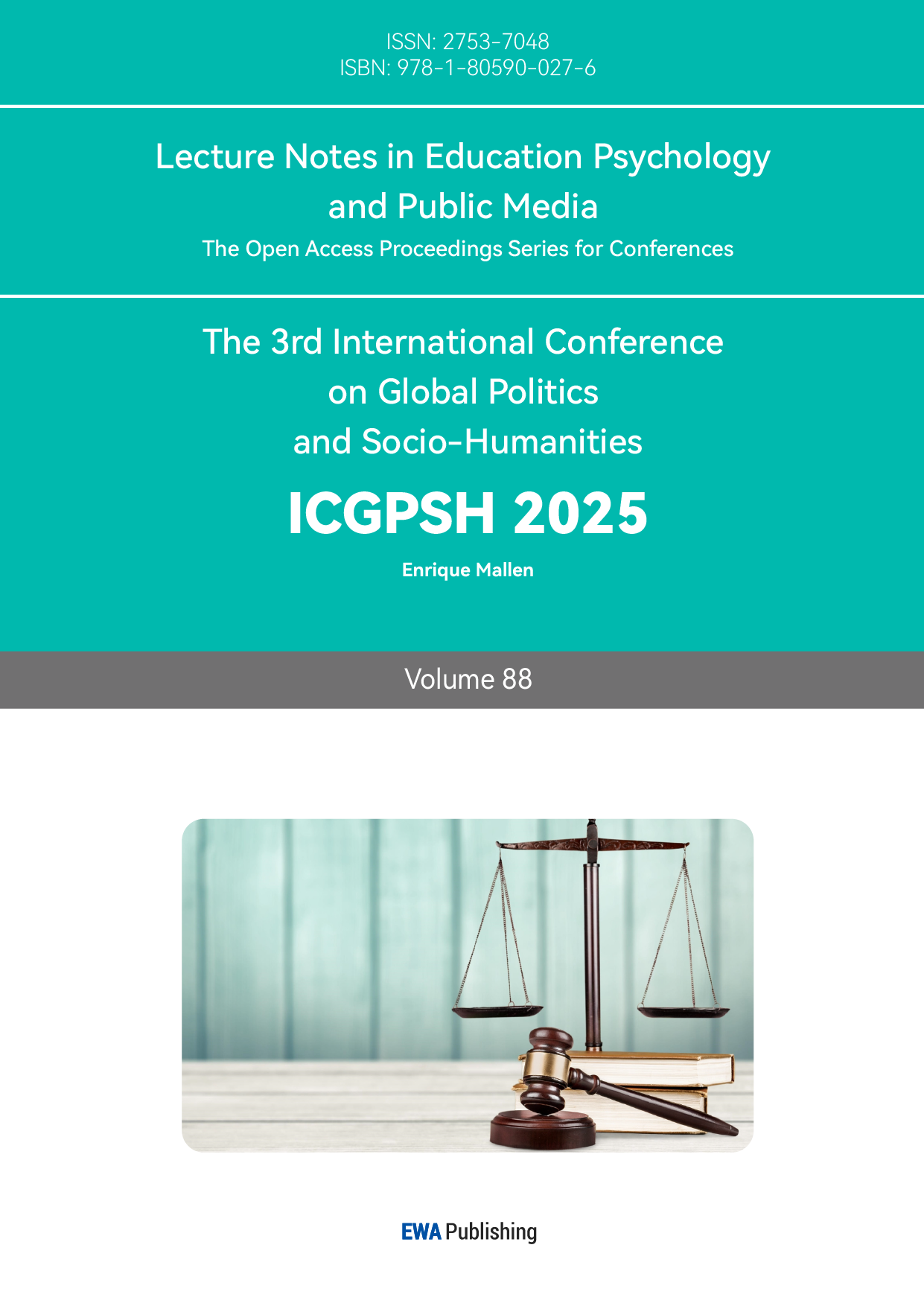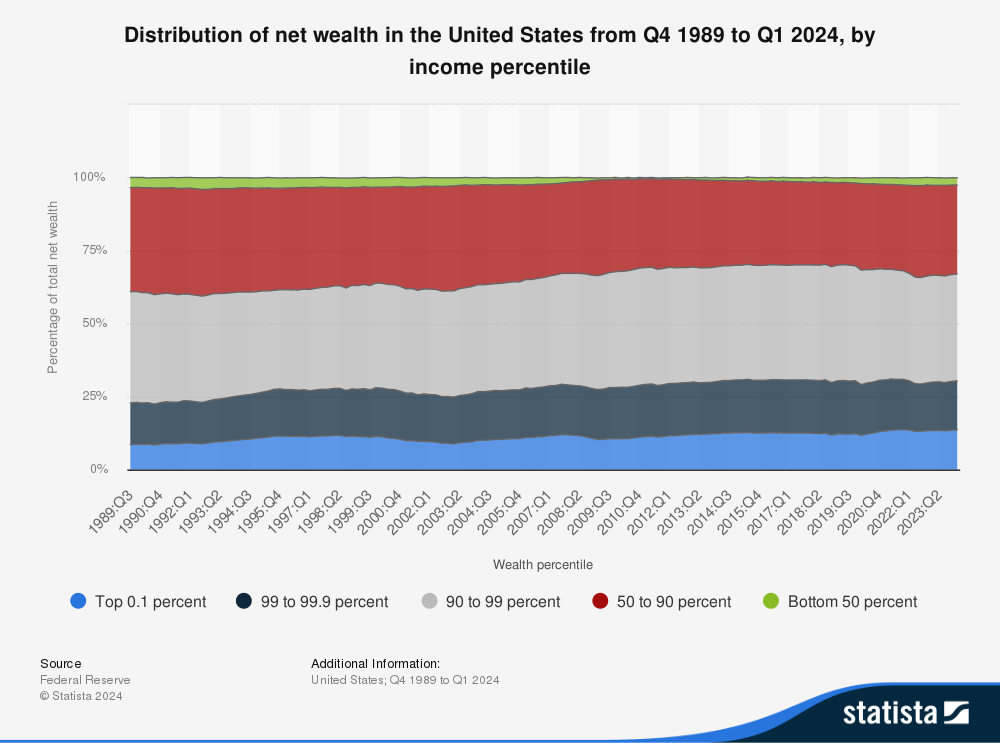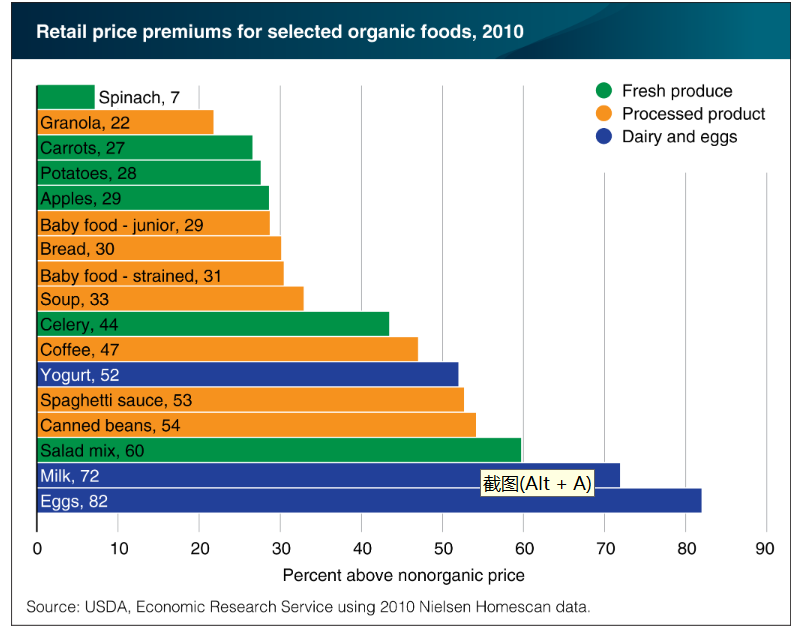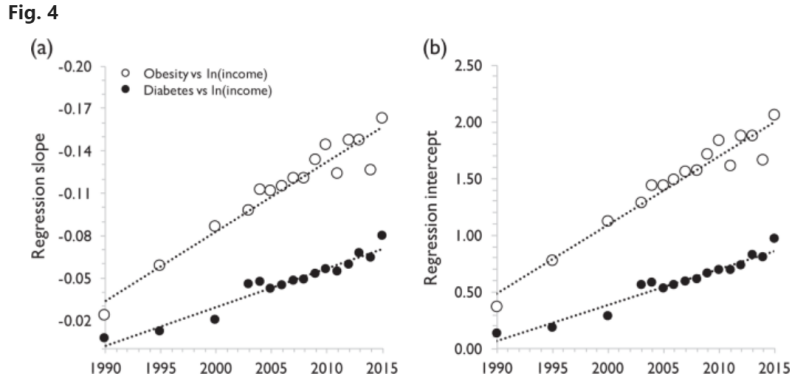1. Introduction
Nowadays, China and America have become the two most important and influential countries in the world, and China-US relations are the most important foreign relations in the world. The US has been the top one since the Second World War but China is growing at such a quick pace after reform and opening up that it can no longer be ignored and has now become the second-largest economic entity. Therefore, it’s essential to understand the similarities and differences between the two countries.
This paper explores the similarities and differences in social stratification issues in China and America. The existence of the social gap has its rationality because it’s generally assumed that the one who works more gets more paid and we all reap what we sow, but the widening of social gap over some extent is unreasonable. The uneven distribution of social wealth has many harmful effects. It can reduce social equality, unequal access to education, healthcare and jobs, restrain economic growth as poorer people’s consumption ability is limited, and arouse social problems such as higher crime rates and loss of social trust, and so on. It is not only because of hard work but also because of several factors as well. Previous studies have shown that guanxi (social relationship) has worsened social inequality in China [1]. China began the Reform and Opening Up in the 1970s, which has also resulted in social stratification, forming social classes similar to those in Western societies: the elite, the middle and the subordinate. A series of institutions established by the state power, including the hukou system, party membership privilege, and danwei system, have been one of the causes as well [2]. This study will try to discuss the particular phenomenon, the formation reason behind this, and how the governments might help to solve the problem both in the United States and China. Others pointed out that because of the pandemic, governments and the market are taking action to promote market vitality and consumer consumption, which makes it more impossible to address social inequality problems [3].
Recent studies have investigated social stratification in both countries, focusing on factors such as income inequality, education, healthcare, and so on. However, a comparative perspective of the analysis of these issues across China and America is limited. The research uses a case study method, mainly a comparative analysis method and a literature review method, with a particular focus on the fields of healthcare and education. The significance of the research is to contribute to the broader understanding of social stratification and provide valuable insights for policymakers in both the US and China.
2. Literature Review
Predecessors have already done a lot of research in this field. One researcher says that social inequality has a big impact on society, ecological and cultural factors create inequality and that social structure provides some insights into it [4]. In another study, it was found that the common feature of Americans and British is that people from the middle and upper classes thought that society was more fair and equal than people from lower classes [5]. In comparison, study pathways are shaped more by students’ social origin in the US than in Germany [6]. However, it was also found that no necessary links were discovered between increased social inequality and a decrease in social trust [7]. Researchers have discovered that the COVID-19 pandemic has worsened social stratification in the United States, and the government must take several measures [8]. Others researches show that social stratification exists in American undergraduate education [9]. In China, the market transition and structural revolution in the 1990s led to residential inequality in cities and social differentiation [10].
3. Case Study
3.1. Education
The American society is highly stratified. The top 10% people own over 50% of total national wealth, while the bottom 50% only own less than 2% of overall wealth(Figure 1).
There are huge differences between the rich and the poor in university enrollment. 2017 data on elite school attendance showed that a quarter of students from the richest families were admitted into Ivy League schools, while only less than 0.5% of students from the bottom 20%. There were far more students from the top 1% than students from the bottom 60% (Figure 2). Also, universities exhibit legacy preference at a dramatically high rate because students with family connections are seen as reliable resources for alumni donations. For example, 46% of students with one or more parents attending Harvard before donated over 500 thousand dollars to Harvard in 2021 (Figure 3). However, this causes problems as children of rich and successful people are enrolled in schools more easily than children of poor people, leading to social stratification.
Tuition for American universities is expensive, especially for leading universities, and many students need to get student loans in order to pay tuition. The student debt for a private university that makes a profit is the most expensive, with $59701 on average, because the tuition there is the highest. Also, the interest rate is quite high, with 7% a year. Many students can’t pay it off throughout their whole life.
|
|
Figure 1: Distribution of net wealth in the United States from Q4 1989 to Q1 2024, by income percentile | Figure 2: Percentage of students’ attendance rates at Ivy League universities classified by social class |
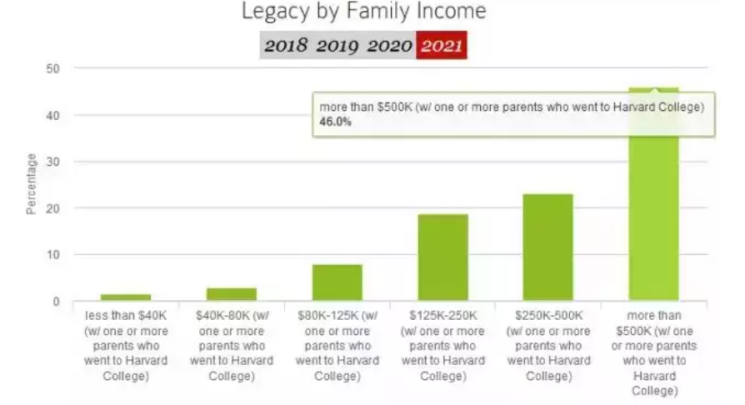
Figure 3: The legacy preference in Harvard University in 2021
3.2. Food and medical
In America, rich people usually enjoy a balanced diet with organic foods, but the poor cannot afford vegetables and fruit, so they eat mainly junk food, which is much cheaper than organic food but bad for health. In McDonald’s menu in 2024, food ranges from $3 to $10, which is quite a cheap price. On the other hand, statistics have shown that organic food is 50% more expensive than conventional food (see Table 1 and Figure 4).
Table 1: 2024 Prices for McDonald’s
Menu Item | 2024 Price |
McDouble sandwich | $3.19 |
Medium Fries | $3.79 |
Quarter Pounder w/ Cheese Meal | $11.99 |
Oreo McFlurry | $4.49 |
10 Pc. McNugget Meal | $10.99 |
4 Pc. McNugget Happy Meal | $4.99 |
Filet-0-Fish sandwich | $5.49 |
Big Mac sandwich | $5.99 |
Medium Drink | $1.61 |
|
|
Figure 4: Premium percentage for some organic foods over traditional ones | Figure 5: Obesity rate’s negative relationship with income |
So the poor fall into a vicious cycle. They are more likely to get sick because of junk foods that are unhealthy, so they have to spend more money on medical care, and they become poorer. They never get out of the cycle. Studies have shown that the obesity rate is negatively correlated with people’s income, which means that the more a person earns, the less likely he or she will be obese (Figure 5). This situation has worsened over the past few decades.
Several factors contribute to the phenomenon of the cheapness of unhealthy food in the US. First, they are mass-produced. Dairy farmers raise chickens and feed them with hormones that enable them to grow faster and bigger. A chicken raised in 1950 took 70 days to grow, while only 48 days in 2008. It also grew three times bigger in 2008 than in 1950. Second, the government provides subsidies for junk food. The initial purpose of providing subsidies for foods was to fund farmers and make nutritious food more affordable, but now it turns out that the majority of this funding goes to junk food. From 1995-2010, the federal government spent $170 billion to finance the production of these foods. For example, sugar manufacturers for producing corn syrup with a much higher level of sweetness than average healthy intake are benefiting from this act.
In America, medical care is really expensive. Americans spent $5266 on individual annual healthcare costs including insurance premiums, out-of-pocket expenses, and co-insurance over deductibles. Even so, a lot of Americans still have medical debt that they can’t afford. Only 40% of people never had medical debt in 2021 (Figure 6).
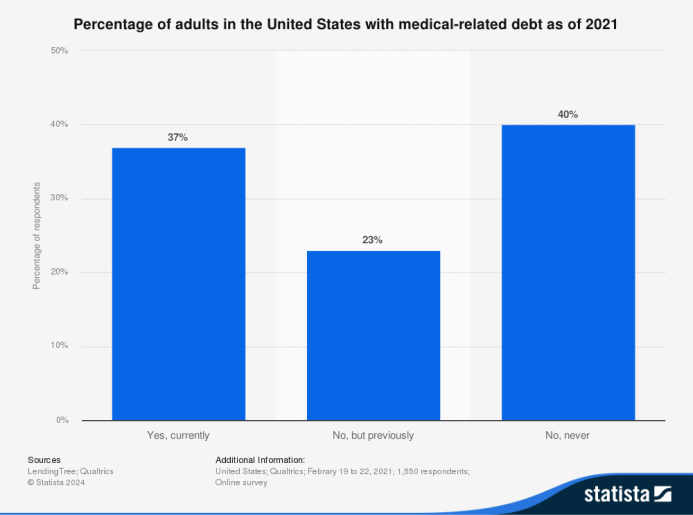
Figure 6: Percentage of adults in the United States with medical-related debt in 2021
3.3. The situation in China
In China, the class-ascent channel is gradually closing. The class-ascent channel opened since Reform and Opening Up in the 1970s. Individual industrial and commercial operators in China benefited a lot in foreign trade due to cheap exports and labor costs, which made their products very popular on the international market. They caught the opportunity that the era gives them and became rich. The economy grew fast back then. However, after the pandemic, the pace of economic growth became slower and young people are even having trouble finding work now, let alone becoming richer.
Quality university education is unevenly distributed in China. In the Gaokao system, admissions are conducted separately by each province and municipality. Schools give priority to the students in their own province by lowering their cut-off scores for local students. However, prestigious universities are centered in first-tier cities such as Beijing and Shanghai, which also have more rich people. There are 8 ‘985’ universities and 26 ‘211’ universities in Beijing. In Shanghai, there are 6 ‘985’ universities and 12 ‘211’ universities. Compared with the most densely populated areas like Henan, it has only one ‘211’ university and no ‘985’ university. People in Henan and so on generally aren’t as rich as people in Beijing and Shanghai. Therefore, quality universities lean towards the rich, not the poor, so it’s quite unfair.
Resources of tutoring classes that students attend with the ultimate goal of entering good universities are also unevenly distributed. There were initially many cheap classes. The background of a recently-issued policy is that students now suffer from insufficient sleep and heavy cultural class tutoring. A survey showed that 24.3% of elementary school students sleep less than 8 hours a day, while 34.2% of junior high school students sleep less than 7 hours a day. 22.2% of elementary school students attend tutoring no less than 3 hours every week and the figure among junior high school students is 32.8%. The economic burden for parents is also heavy, too. 60% of students attend tutoring, with an annual cost of ¥9211 [11].
In China, the food problem is not so serious. The average price of vegetables is 5.02 Yuan ($0.68) per kilogram and fruit is 7.25 Yuan ($0.98) per kilogram. The obesity rate in America is 35%, while the figure is 14% in China.
4. Discussion
The similarity of China and America in terms of social stratification is that both Chinese and American societies have uneven education resource distribution and students from richer families can be enrolled in prestigious universities more easily. The difference is that in America the poor eat more unhealthy food that causes them to get sick, but in China, healthy food is cheaper to buy, so this is not a problem in China.
The meaning is profound. This study can provide the governments with policies to address the aforementioned problem.
For the government, the problem of education inequality in elementary education should be paid attention to as well. The government should consider setting up more schools in populated areas that are not as developed economically as Beijing and Shanghai. Actually, netizens have created a virtual university called “Shanhe University.” “Shan” refers to Shandong and Shanxi Province, and “He” refers to Hebei and Henan Province. These four provinces are densely populated but have very few good universities, so people want the government to establish one more.
For the American government, there are a lot of things to do. It should provide more government subsidies to poor students. The government should provide more funding for all types of colleges and universities, including private for-profit universities, so as to lower the tuition a bit. The government should provide food subsidies directed straight towards healthy vegetables and fruit, not junk food and fast food. For example, the government should not provide subsidies for chicken-raising farms but for farms that grow green vegetables. The government should regulate hospitals and healthcare industries on charging issues. The government should fund hospitals more so that the people will not be charged too much.
5. Conclusion
This paper provides a comparative analysis of social stratification in China and America, focusing on education and healthcare. The similarity is that China and America both face uneven distribution of quality education. Poor people in both China and the United States have trouble accessing good quality education, especially higher education. The poor people cannot afford healthy food, and they are heavily charged in healthcare and even face medical debt, so they are stuck in a vicious cycle. The findings contribute to the understanding of social inequality in both countries. The study is limited by the scope of analysis and available data. Future research could expand the analysis to include more indicators of social stratification, such as indicators in different fields or more qualitative indicators. Addressing social stratification requires comprehensive policies and continued research efforts, and the suggested policies may be incomplete as well. Above all, this paper provides a foundation for further exploration in this area.
References
[1]. T. Yang, T. Zhang (2023) Social capital meets guanxi: Social networks and income inequality in China https://doi.org/10.1016/j.chieco.2023.102094
[2]. L. Fang (2024). Institutions and Class Inequality in China’s Party-State System: An Evolution from Pre-to Post-Reform. In Global Handbook of Inequality (pp. 1-20). Cham: Springer International Publishing.
[3]. G. Vidal (2021)Recession, Financial Instability, Social Inequality and the Health Crisis https://doi.org/10.1080/09538259.2021.1943933
[4]. D. Redhead (2024) Social structure and the evolutionary ecology and inequality https://doi.org/10.1016/j.tics.2024.10.013
[5]. L. Elenbaas, L. McGuire, A. Ackerman, E. Kneeskern, L. Kinnard, A. Farooq, F. Law, D. Makanju, K. Ebert, & R. S. Mistry(2024) Social class group identity, intergroup attitudes, and views on social mobility and inequality in the U.K. and the U.S. https://doi.org/10.1111/asap.12431
[6]. C. Hass, A. Hadjar.(2024) Social Inequalities in Study Trajectories: A Comparison of the United States and Germany. Sociology of Education: 2024, Vol. 97(3) 276–296
[7]. M. Fairbrother and I. W. Martin (2013) Does inequality erode social trust? Results from multilevel models of US states and counties https://doi.org/10.1016/j.ssresearch.2012.09.008
[8]. I. Buder and J. Jennings (2020) Pandemics, Socioeconomic Gaps, and Macroeconomic Policy: The Ugly Truth Highlighted by COVID-19. https://doi.org/10.1080/07360932.2021.1997781
[9]. J. R. Posselt and E. Grodsky (2017) Graduate Education and Social Stratification https://doi.org/10.1146/annurev-soc-081715-074324
[10]. Miao, J. (2024) Socio-spatial differentiation and residential inequalities in Chinese cities https://doi.org/10.1111/soc4.13174
[11]. Zhou, J., & Chen, H. (2023). Will reducing the burden of extracurricular tutoring raise fertility willingness in China? Five policy suggestions. Journal of Policy Modeling, 45(6), 1132-1147.
Cite this article
Zuo,S. (2025). The Similarities and Differences in China and the United States of America in Terms of Social Stratification and Governmental Solutions. Lecture Notes in Education Psychology and Public Media,88,1-6.
Data availability
The datasets used and/or analyzed during the current study will be available from the authors upon reasonable request.
Disclaimer/Publisher's Note
The statements, opinions and data contained in all publications are solely those of the individual author(s) and contributor(s) and not of EWA Publishing and/or the editor(s). EWA Publishing and/or the editor(s) disclaim responsibility for any injury to people or property resulting from any ideas, methods, instructions or products referred to in the content.
About volume
Volume title: Proceedings of the 3rd International Conference on Global Politics and Socio-Humanities
© 2024 by the author(s). Licensee EWA Publishing, Oxford, UK. This article is an open access article distributed under the terms and
conditions of the Creative Commons Attribution (CC BY) license. Authors who
publish this series agree to the following terms:
1. Authors retain copyright and grant the series right of first publication with the work simultaneously licensed under a Creative Commons
Attribution License that allows others to share the work with an acknowledgment of the work's authorship and initial publication in this
series.
2. Authors are able to enter into separate, additional contractual arrangements for the non-exclusive distribution of the series's published
version of the work (e.g., post it to an institutional repository or publish it in a book), with an acknowledgment of its initial
publication in this series.
3. Authors are permitted and encouraged to post their work online (e.g., in institutional repositories or on their website) prior to and
during the submission process, as it can lead to productive exchanges, as well as earlier and greater citation of published work (See
Open access policy for details).
References
[1]. T. Yang, T. Zhang (2023) Social capital meets guanxi: Social networks and income inequality in China https://doi.org/10.1016/j.chieco.2023.102094
[2]. L. Fang (2024). Institutions and Class Inequality in China’s Party-State System: An Evolution from Pre-to Post-Reform. In Global Handbook of Inequality (pp. 1-20). Cham: Springer International Publishing.
[3]. G. Vidal (2021)Recession, Financial Instability, Social Inequality and the Health Crisis https://doi.org/10.1080/09538259.2021.1943933
[4]. D. Redhead (2024) Social structure and the evolutionary ecology and inequality https://doi.org/10.1016/j.tics.2024.10.013
[5]. L. Elenbaas, L. McGuire, A. Ackerman, E. Kneeskern, L. Kinnard, A. Farooq, F. Law, D. Makanju, K. Ebert, & R. S. Mistry(2024) Social class group identity, intergroup attitudes, and views on social mobility and inequality in the U.K. and the U.S. https://doi.org/10.1111/asap.12431
[6]. C. Hass, A. Hadjar.(2024) Social Inequalities in Study Trajectories: A Comparison of the United States and Germany. Sociology of Education: 2024, Vol. 97(3) 276–296
[7]. M. Fairbrother and I. W. Martin (2013) Does inequality erode social trust? Results from multilevel models of US states and counties https://doi.org/10.1016/j.ssresearch.2012.09.008
[8]. I. Buder and J. Jennings (2020) Pandemics, Socioeconomic Gaps, and Macroeconomic Policy: The Ugly Truth Highlighted by COVID-19. https://doi.org/10.1080/07360932.2021.1997781
[9]. J. R. Posselt and E. Grodsky (2017) Graduate Education and Social Stratification https://doi.org/10.1146/annurev-soc-081715-074324
[10]. Miao, J. (2024) Socio-spatial differentiation and residential inequalities in Chinese cities https://doi.org/10.1111/soc4.13174
[11]. Zhou, J., & Chen, H. (2023). Will reducing the burden of extracurricular tutoring raise fertility willingness in China? Five policy suggestions. Journal of Policy Modeling, 45(6), 1132-1147.





